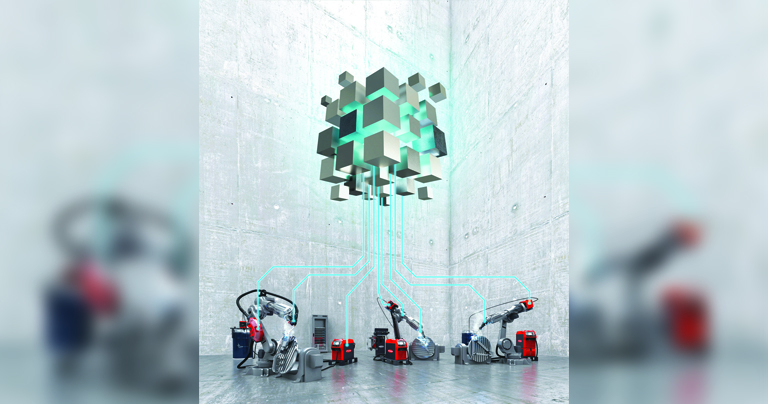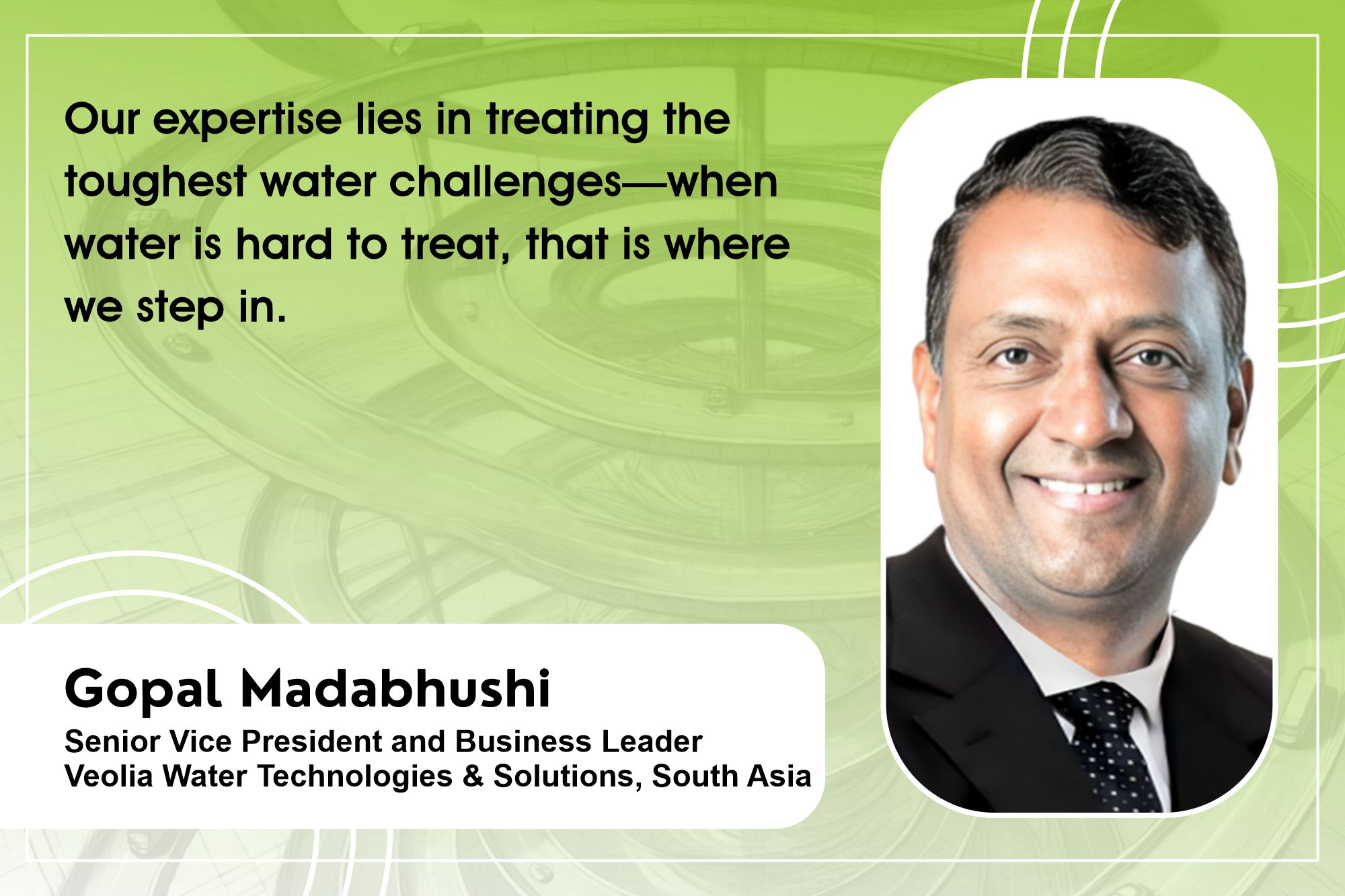The infrastructure boom fuels welding and cutting industry prospects
By Edit Team | October 17, 2023 1:47 pm SHARE

The welding and cutting industry is prepared for ongoing growth and development as India’s infrastructure projects continue to drive demand across numerous industries.
With India’s infrastructure initiatives in full swing, the welding and cutting industry stands at the forefront of significant growth. This interview explores the sectors driving this expansion and their impact on the industry.
With the increased focus on infrastructure, what expansion opportunities does the welding and cutting industry have?
The welding and cutting industry has the potential for tremendous growth, attributable mainly to India’s increased emphasis on infrastructure development. The country’s ambitious infrastructure projects drive demand for welding and cutting services in various industries. The infrastructure development sector, for example, has a major emphasis on projects such as roads, bridges, and buildings, which necessitate welding expertise to maintain structural integrity.
India’s real estate and construction operations are booming, and there is always a demand for welding services for residential, commercial, and industrial projects. Also, the transportation sector, which includes automobiles, trains, and commercial and public transportation, heavily depends on welding for manufacturing, repair and maintenance, resulting in a constant demand for welding services. The energy sector, including power plants, renewable energy projects, and oil and gas enterprises, also relies on welding for essential construction and maintenance, combined with India’s energy generation and sustainability investments. Similarly, the continual requirements of the Defence industry provide a solid market for welding and cutting services, particularly in the production and repair of military equipment.
The integration of welding automation and robotics is improving efficiency and safety within the sector, while the growing demand for welding services is generating a demand for skilled welders and robotic welding experts, providing employment possibilities and career progression prospects. Subsequently, research and development institutions and engineering colleges are helping to build the sector by producing customised welding solutions for the Indian market, which leads to improved welding processes and technologies. With these variables in place, the welding and cutting industry is prepared for ongoing growth and development as India’s infrastructure projects drive demand across numerous industries.
How do real-time monitoring and data analytics enhance defect detection and process optimisation in welding?
When paired with data analytics, real-time monitoring systems such as the Fronius Weld Cube play a vital part in welding process optimisation through multiple key mechanisms. These devices continuously capture data, including crucial parameters such as voltage, current, and welding speed, generating an easily available data repository for research. Also, they excel at recognising anomalies by quickly spotting deviations from set parameters, such as voltage spikes or irregular currents, serving as early alerts for potential flaws. This real-time defect identification enables fast corrective steps, notifying welders and operators to pause or change the welding process, successfully preventing the creation of flawed welds.
These monitoring systems contribute to efficiency and cost reduction by greatly lowering the requirement for rework or post-weld inspections and fault prevention. This saves time and lowers the material and labour costs associated with correcting welding flaws. Furthermore, these systems detect patterns and trends in welding data over time, allowing process fine-tuning for improved performance, higher quality, and increased efficiency. They also provide traceability by collecting and preserving data connected to each weld, making it easier to identify problem sources and track the history of the welding process. These technologies save downtime and assure optimal equipment performance by enabling predictive maintenance scheduling.
Moreover, data analytics technologies give intuitive visual representations of the welding process, assisting operators and engineers in data interpretation and making informed decision-making. Lastly, historical data and analytics aid in discovering recurring issues and bottlenecks, promoting a continuous improvement attitude and guaranteeing compliance with industry norms and regulations, with the capability of producing compliance reports for regulatory bodies or clients. When paired with data analytics, real-time monitoring systems like the Fronius Weld Cube provide a complete solution for enhancing welding quality, minimising defects, and optimising the welding process. They provide actionable data, boost efficiency, help save money, and ensure consistent and high-quality welds.
Evaluate the economic viability of implementing robotic welding systems versus manual welding operations.
The economic viability of implementing robotic welding systems, including cobots, versus manual welding operations depends on various factors, primarily production volume, labour costs, and quality requirements. While the initial investment is significant, the potential for increased productivity, reduced defects, and long-term cost savings can make automation an economically sound choice for many manufacturing operations, especially those with high-volume and high-quality demands
What kind of investments are required to bring more precision and advancements in this industry?
It is important to properly invest resources in key fields to promote developments in this industry. A major aspect is facility renovations, including purchasing cutting-edge welding machinery, robotic systems, and Metal Additive Manufacturing equipment. Additionally, substantial investments in research and development are required to encourage innovation in welding techniques, materials, and automation. An equivalent focus on workforce development is required to ensure employees can operate modern technology efficiently.
At the same time, strict quality control techniques, such as incorporating Non-Destructive Testing (NDT) and Destructive Testing (DT) methodologies alongside cutting-edge inspection technology, are essential for generating defect-free welds. Finally, integrating automation, collaborative robotics, and AI systems is critical for increasing precision and efficiency. These focused investments collectively propel the industry forward and strengthen its competitive position, ultimately influencing the future of precision in this area.
Which training and skill development activities cater to the need for quality and qualified welders in India?
Many training and skill development initiatives actively address the demand for competent welders in India. These programmes aim to improve workforce competency and ensure a consistent supply of skilled welders in various industries.
Industrial Training Institutes (ITIs) throughout the country offer basic welding and fabrication courses that serve as a stepping stone for prospective welders. Government-sponsored skill development and vocational training programmes, such as the Pradhan Mantri Kaushal Vikas Yojana (PMKVY), aim to improve employability by providing extensive welding training.
In addition, organisations such as the American Welding Society (AWS) and the Indian Institute of Welding (IIW) offer certification programmes that confirm a welder’s skills and expertise, reinforcing their credentials. Many sectors also provide on-the-job training (OJT), which allows newcomers to obtain practical experience while being mentored by experienced welders. Also, a few companies offer apprenticeship programmes that combine classroom instruction with hands-on experience, allowing individuals to learn and earn simultaneously. Skill development and vocational training are being promoted as essential components of larger employment-generation programmes by government initiatives at both the state and federal levels.
Spokesperson – Vishwanath Kamath, Managing Director, Fronius India Private Limited
Cookie Consent
We use cookies to personalize your experience. By continuing to visit this website you agree to our Terms & Conditions, Privacy Policy and Cookie Policy.




































-20240213125207.png)

























